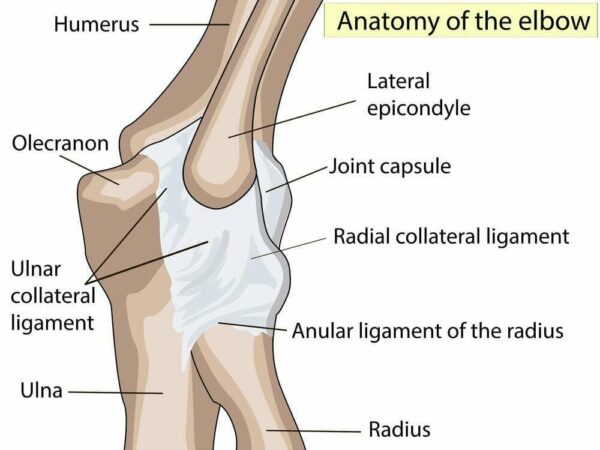Ligaments are bands of tough elastic connective tissue, that contain strong collagen fibres, around your joints. They connect bones together, give your joints support and limit your movement. This ensures that the bones in your joints don’t twist too much or move too far apart and become dislocated.
The ligaments around your bones and joints aren’t the only ligaments in your body. There are also ligaments which keep your internal organs in place.
People often confuse ligaments with tendons, which connect muscle to bone.
The most common ligaments found in your body are:
Knee ligaments
There are four important ligaments connecting your upper leg (thigh bone or femur) and your lower leg (shin bone or tibia):
- Anterior cruciate ligament
The anterior cruciate ligament is located towards the front of your knee. It controls the forward movement and the rotation of your shinbone.
- Posterior cruciate ligament
The posterior cruciate ligament is situated towards the back of your knee. It controls the backward movement of your shinbone.
- Medial cruciate ligament
The medial cruciate ligament is situated inside your knee. It gives the interior of your knee stability.
- Lateral collateral ligament
The lateral collateral ligament is situated outside your knee. It gives the outside of your knee stability.
Elbow ligaments
- Ulnar collateral ligament
The ulnar collateral ligament connects the bone in your upper arm (humerus) to the bone on the ulnar side of your forearm. When your palms are facing the sky, the ulna side is the inside of your forearm.
- Radial collateral ligament
The radial collateral ligament also connects the bone in your humerus to the outer forearm bone (radius) and extends to the ulna for additional support.
- The annular ligament
The annular ligament circles the top of your radius and holds it against the ulna.

Shoulder ligaments
The ligaments in your shoulder connect your humerus to your shoulder blade (scapula) and the collarbone to the top of your scapula.
Ankle ligaments
- Anterior talofibular ligament
The anterior talofibular ligament connects the thin bone on the outside of your shinbone (fibula) and the bone between your heel and shinbone (talus).
- Posterior talofibular ligament
The posterior talofibular ligament also connects your fibula and talus but runs along the back of your ankle.
- Calcaneofibular ligament
The calcaneofibular ligament connects the fibula to your heel bone.
- Deltoid ligament
The deltoid ligament complex is situated on the inside part of your ankle. It connects the tibia to the talus on the inside of your foot along with the navicular bone for additional support.
Your ligaments are maintain stability in your body by connecting your bones, supporting your joints and keeping your internal organs in place. Each ligament has a particular function in enabling and limiting certain movements. If you push the ligament’s limits, it can get hurt and your body’s movement will be impaired for quite some time.
Contact Trifocus Fitness Academy
To learn more about how the body works internally, we really recommend that you do an accredited exercise science course such as the one that we offer. Follow this link for more information.


